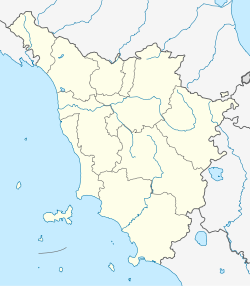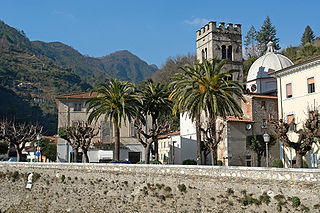
Seravezza is a town and comune in the Province of Lucca, in northern Tuscany, Italy. It is located in Versilia, close to the Apuan Alps.

The province of Lucca is a province in the Tuscany region of Italy. Its capital is the city of Lucca.

Viareggio is a city and comune in northern Tuscany, Italy, on the coast of the Tyrrhenian Sea. With a population of over 62,000, it is the second largest city in the province of Lucca, after Lucca.
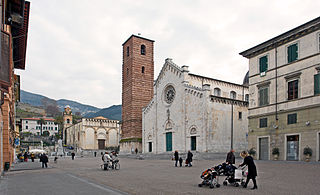
Pietrasanta is a town and comune on the coast of northern Tuscany in Italy, in the province of Lucca. Pietrasanta is part of Versilia, on the last foothills of the Apuan Alps, about 32 kilometres (20 mi) north of Pisa. The town is located 3 kilometres (1.9 mi) off the coast, where the frazione of Marina di Pietrasanta is located.
Versilia is a part of Tuscany in the north-western province of Lucca and southern part of Massa-Carrara, and is named after the Versilia river. Known for fashionable Riviera resorts, it consists of numerous clubs that are frequented by local celebrities.

Massa is a town and comune in Tuscany, central Italy, the administrative centre of the province of Massa and Carrara. It is located in the Frigido River Valley, near the Alpi Apuane, 5 km (3 mi) from the Tyrrhenian Sea.

Camaiore is a city and comune of 32,513 inhabitants within the province of Lucca, Tuscany, central-western Italy. It stretches from the Apuan Alps to the east, to the plains and the coast of Versilia to the west.
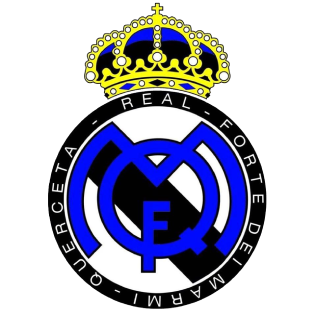
Unione Sportiva Dilettantistica Real Forte dei Marmi-Querceta, normally referred to as Real Forte Querceta, is an Italian association football club located in Forte dei Marmi, Tuscany. It currently plays in the Serie D. Its colors are black and blue. Its name and logo are inspired by Spanish club Real Madrid CF.

Biroldo is a very dark, brownish-red, soft-textured Tuscan blood sausage about 4 inches (10 cm) wide, with lighter-coloured chunks of meat and fat in it.

UNA Hotels & Resorts is an Italian hotel chain with four-star hotels and resorts throughout Italy with more than 3000 rooms. The company also owned a country estate composed of 7 Italian luxury villas. In 2016 UNA Hotels was acquired by UNIPOL Group and merged with Atahotels into Gruppo UNA S.p.A., a new Italian hotel chain.

The Genoa–Pisa railway is one of the trunk lines of the Italian railway network. It runs along the Ligurian coast from Genoa to Pisa through the Riviera di Levante and the Versilia. It passes through the cities of Massa, Carrara and La Spezia. South of Pisa the Pisa–Rome line continues along the Tyrrhenian coast to Rome. The line is double track and is fully electrified at 3,000 V DC. Passenger traffic is managed by Trenitalia.

Viareggio railway station serves the city and comune of Viareggio, in the region of Tuscany, central Italy. Opened in 1936, it forms part of the Pisa–La Spezia–Genoa railway, and is also a junction for a regional line to Florence.
Villa Agnelli and Villa Pesenti is a complex of historical buildings in Forte dei Marmi, Tuscany, Versilia, Italy.

Retignano is a village of about 400 inhabitants, located on a hill in the historical Versilia region of Tuscany, Italy. The inhabitants are known as the Retignanesi.
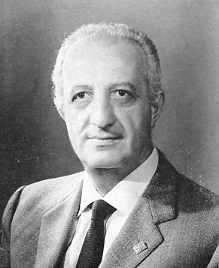
Leonetto Amadei was an Italian lawyer and a politician.

Park Eun Sun is a South Korean sculptor.
“La Signorina” Nerina (Nera) Simi was an Italian artist and a teacher of painting and drawing. She was the daughter of the Italian painter Filadelfo (Philadelphus) Simi (1849–1923), himself a student of the French academician Jean-Léon Gérôme (1824–1904).

Montalto is a mountain located in Tuscany, Italy and part of the Apuan Alps range. Its highest peak is at roughly 913 meters above the sea level and it is also home of two villages, Retignano and Volegno, in the municipality of Stazzema, Province of Lucca.

Tonfano, originally called ‘Tonfalo’, is one of the four localities in which the frazione of Marina di Pietrasanta is divided, along with Fiumetto, Le Focette and Motrone. The name is derived from that of the river which flowed through the area before it silted up. Tonfano is bordered by Fiumetto to the north and by Motrone to the south.




